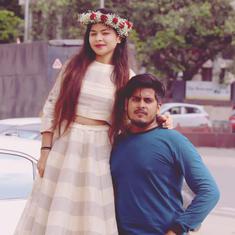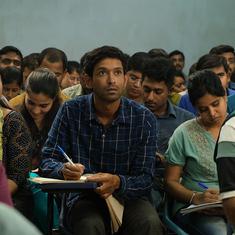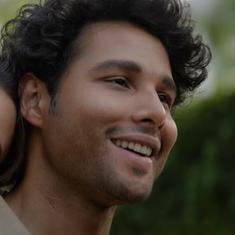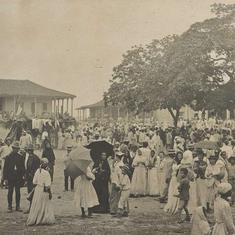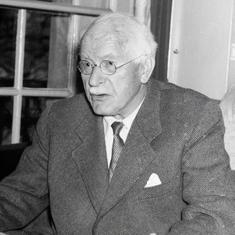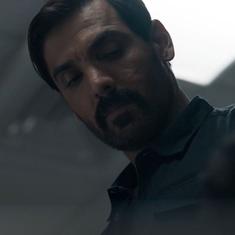In less than 24 hours after January 1, Maharashtra’s Bhima Koregaon was transformed from a quiet village of historical significance mainly for Dalits into a national hashtag for all the wrong reasons. A momentous celebration by Dalits here had been turned into a conflagration claiming the life of Rahul Phatangale (28), injuring several people and leaving around 40 vehicles gutted.
Its embers then touched major cities across Maharashtra including Mumbai, pitted caste groups against each other and threatened to widen the rips in the state’s social fabric. By Tuesday evening, the police in Pimpri, on the outskirts of Pune, had registered cases against two men with strong right-wing links, Manohar alias Sambhaji Bhide “Guruji” (85) who leads the Shiv Prathisthan and Milind Ekbote (60) who heads the radical Hindu outfit Samasta Hindu Aghadi.
The Bhima Koregaon incident is the product of many entangled threads: consolidation among Dalits, competitive leadership among their leaders, the larger association between Dalits and Marathas, historical events and their symbolism in present times, the re-assertion of Dalit identity and mainstreaming of their history, the rise of competitive right-wing forces, and political mobilisation ahead of the 2019 national elections.
Somewhere in this action-reaction cycle, selectively amplified by the political class and sections of the media, it is easy to confuse the chronology of events. The violence did not begin on January 2. Enraged Dalits did not start the violence in Maharashtra’s cities, though the random acts of vandalism and muscle-flexing during the state-wide bandh on Wednesday have cost them the high moral ground there. It was they who faced the initial violence around Bhima Koregaon on January 1 and the attacks were rooted in a specific socio-historical context.
Every January 1, Dalits, mainly Mahars, congregate at Bhima Koregaon to pay respects at the Vjiay Stambh, or victory memorial, there. It is an article of faith for them. On this day in 1818, a few hundred Mahar soldiers in the British Army are said to have managed to inflict damage and force a retreat from Koregaon of the forces of the Peshwas, a regime infamous for its brutal oppression of the lower castes. The term often used in these parts for that event is “Peshwai gadhli”: the Peshwa regime has been buried. In 1927, BR Ambedkar paid tribute here to Mahar soldiers on New Year’s Day, and the practice has continued every year since.
On the 200th anniversary of the battle this year, several lakh Dalits were expected at Bhima-Koregaon. In fact, the celebrations began a day earlier with an event called the Elgar Parishad in Pune’s legendary Shaniwarwada, the seat of the erstwhile Peshwa empire. The organisers, the Bhima Koregaon Shourya Divas Abhiyan, invited Dalit activist-turned-MLA from Gujarat Jignesh Mevani, Radhika Vemula (whose son Rohith Vemula became a national figure after his suicide in 2016), and Delhi-based student leader Umar Khalid to participate.

The Dalits’ dare
The very idea of Dalits taking over Shaniwarwada, if only for a few hours, was an affront to the descendants of the Peshwas and assorted Brahmin groups. Udaysinh Peshwa and the Akhil Bharatiya Brahmin Mahasangh, among others, urged the Pune police to deny permission for the event. They disputed the historical account that the British Army had won the battle of Bhima Koregaon and asserted that it was not proper to celebrate the British victory over an Indian force. The labelling of the Parishad and Bhima-Koregaon commemoration as “anti-national” began right here. Eventually, permission was given, but with several caveats.
At the event, Mevani who had been elected to the Gujarat Assembly last month as an independent MLA, warned the Bharatiya Janata Party government at the Centre, “If you think of changing the Constitution and the democratic set-up of India, we too have the power to safeguard it.” He went on to describe the BJP as “neo-Peshwai”. Thousands gathered there – Dalits, left-leaning, progressive and Ambedkarite groups – cheered this.
As the dawn of 2018 broke, Dalits and others made their way to Bhima Koregaon. Lakhs saluted the memorial. Along the route to and from Koregaon, they encountered violent attacks by groups of people carrying saffron flags, throwing stones and setting vehicles aflame. Clashes followed. Angry Dalit groups across Maharashtra protested this by blocking roads in cities and Mumbai’s suburban railway, arm-twisting shops to shut down, and damaging public property.
Prakash Ambedkar, Ambedkar’s grandson and leader of the Dalit party Bharip Bahujan Mahasangh, attributed the outrage to deep angst against the Devendra Fadnavis government for allowing violent right-wing groups social space. However, by the evening of January 2, the counter-violence by Dalit groups had become the popular narrative; the violence against them the previous day hardly found a mention. The selectivity was so brazen that even after cases were registered against Bhide “Guruji” and Ekbote, sections of media absurdly blamed Mevani and Khalid for it.
Caste equations
At the heart of the Bhima Koregaon story is the age-old power struggle between the Brahmins and the Marathas. This fault-line gets further complicated with the Dalits, primarily Mahars, joining forces with the Marathas against their common caste enemy.
The rise of the Rashtriya Swayamsevak Sangh ideology culminating, as it were, in the handsome victory of the BJP in the state Assembly election of 2014 and having a RSS-trained Brahmin, Devendra Fadnavis, lead the government has meant that the socially-politically powerful Marathas felt marginalised. Over the past three years, Maratha leaders, mainly in the Congress and Nationalist Congress Party – the latter often ridiculed as a Maratha-only party – have emphasised the “Brahminical nature” of the government.
Out of the arena of electoral politics, Maratha youth formed an enviable network across the state and have organised a series of Maratha Kranti Morchas across the state over the past two years. Each demonstration drew lakhs of Maratha men, women and youth, and took the state by storm. They were ostensibly aimed at putting pressure on the Fadnavis government to bring the rapists-murderers of a young girl in Kopardi to justice. She was a Maratha and the accused, Dalits. But the morchas also highlighted other issues such as the state’s agrarian crisis and the Maratha demand for reservations in educational institutions and government jobs.
The anti-government sentiment in the morchas was but a thin veil for anti-Brahminism. Of course, Shivaji had mainly selected Brahmins for his cabinet, but it was equally true that Brahmin priests had declined to perform his coronation, owing to his lower caste. The Brahmin Peshwas, when they had control of the Maratha empire, treated Marathas with disdain and Mahars with barbaric cruelty, according to historical accounts.

Complicated differences
Marathas and Dalits have not always been on the same side of the socio-political line in the state. They have had differences of opinion, different political strategies. The situation has not been helped by a spate of brutal murders of Dalit youth in the last few years in western Maharashtra, mainly Ahmednagar, in which the accused were Marathas.
The last few years have seen a resurgence among Dalit groups across online platforms which breathed new life into their campaigns as well as on the ground where young leaders emerged. The government’s ban on beef gave some a cause to rally around. The decision of the once-fiery Dalit mass leader Ramdas Athavale to align with the BJP helped consolidate others. It isn’t that differences have melted, as Prakash Ambedkar said, but there is now a common cause. In this resurgence, there has been much reclaiming of Dalit history and symbols.
Despite their differences, many Maratha and Dalit groups have come to at least two realisations: first, that if they join forces politically, they stand a chance to counter the BJP’s election juggernaut, as was the case in Gujarat last month; second, the majoritarian Hindu-nationalist re-shaping of society or the Golwalkar-Savarkar doctrine can be countered by renewing the inclusive Phule-Shahu-Ambedkar ideology.
Significantly, Dalit leader Prakash Ambedkar and leaders of the Sambhaji Brigade, a Maratha organisation, jointly instructed their members to eschew violence on January 2. When sections of the media portrayed the Bhima Koregaon violence as being a case of Maratha-versus-Dalit, Ambedkar ruled this out. “If there was any tension, the 200th anniversary of the Bhima-Koregaon battle would not have taken place,” he said. “The January 1st programme was organised by the Sambhaji Brigade too.”
With Mevani now in the equation, it is clear that the alignment of forces is in preparation for state Assembly elections over the next year as well as the 2019 general elections. Hardcore Ambedkarites see Mevani as a Left-leaning ideologue “mixing Ambedkar with Marx”, as one of them complained. Veteran Dalit leaders are nervous about his popularity. Besides, Mevani has a lot to learn about Dalit politics in Maharashtra. But all said, the Bhima Koregaon story has catapulted him to centre-stage already.
The right-wing as fringe?
The saffron flags held aloft by the attackers on Dalits on January 1, and the cases against Bhide “Guruji” and Ekbote have turned the spotlight firmly on the violent agenda of right-wing groups.
To call them fringe is inaccurate. They are central to the unfolding of the Hindutva ideology. Bhide “Guruji” gave up his career as a physicist and former professor at Pune University to become a full-time worker of the Rashtriya Swayamsevak Sangh. But he was also enamoured by Shivaji. He set up the Shiv Prathisthan in the late 1980s.
He is known to enjoy the loyalty of thousands of RSS workers across the Satara-Sangli-Kolhapur belt. During an election rally in Sangli district in October 2014, Prime Minister Narendra Modi had said of him: “Bhide Guruji did not invite me here. I came here on his orders.”
Ekbote, a former BJP corporator in Pune, derives his fame as a result of his Gou-Raksha Abhiyan organisation and “cow protection work”, which received a fillip in 2015. He has at least 12 police registered cases against him, including rioting with a deadly weapon and provoking breach of peace.
Radhakrishna Vikhe Patil, Opposition leader in the state Assembly and a Congressman, said that it was not enough to register cases against these groups. “They threaten social cohesion and peace, they should be finished,” he said, demanding that these organisations are banned.
On Tuesday, Maharashtra Chief Minister Fadvanis ordered a judicial inquiry into the Bhima Koregaon violence. It’s anybody’s guess if he can – or wants to – rein in his ideological colleagues and halt the polarisation in Maharashtra.

